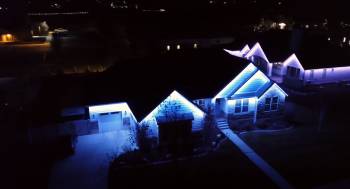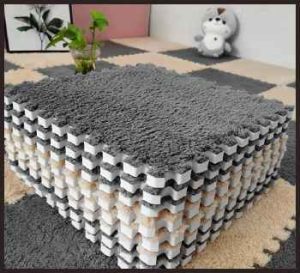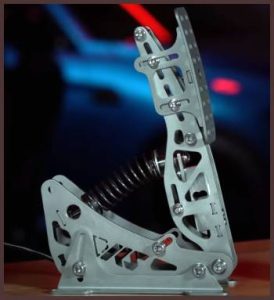In the world of architectural and landscape lighting, two standout names often take center stage: Gemstone and Jellyfish Lighting. Both are recognized for their innovative, high-quality products. However, they each possess unique attributes, leading to an ongoing debate among consumers.
Let’s delve into the comparison of Gemstone vs Jellyfish Lighting, analyze their pros and cons, and address some frequently asked questions about these lighting giants.
A Brief Comparison Table
| Features | Gemstone Lighting | Jellyfish Lighting |
| Type of Lighting | Primarily LED | Primarily LED |
| Energy Efficiency | High | High |
| Ease of Installation | Some systems allow DIY | Professional installation usually required |
| Customizability | Limited | High |
| Brightness | Average to High | High |
| Versatility | High | High |
| Durability | Average to High | High |
| Cost | Moderate to High | High |
This table encapsulates the key attributes of both brands. It serves as a quick reference guide, allowing you to make an informed decision based on your unique lighting needs.
The Allure of Gemstone Lighting

Gemstone Lighting has carved a niche for itself in the lighting market. The brand has been hailed for its commitment to energy-efficient LED lighting solutions and user-friendly control interfaces.
Pros of Gemstone Lighting
- Energy Efficiency
Gemstone primarily uses LED lights, which are known for their superior energy efficiency. LEDs use significantly less energy than traditional bulbs, reducing your carbon footprint and saving on energy bills.
- Ease of Installation
Gemstone’s lighting systems are designed for straightforward installation, and some products even allow for DIY installation. This feature adds a level of convenience, and for the hands-on types, an opportunity to engage in a fulfilling project.
- Versatility
The brand’s array of products means you can find a solution for virtually any lighting need, from landscape to architectural, and everything in between.
Cons of Gemstone Lighting
- Limited Customizability
Although versatile, Gemstone’s lights may not offer the same level of customization as some other brands. This could be a downside for those seeking a highly personalized lighting design.
- Upfront Cost
While the energy efficiency of LEDs can lead to long-term savings, the initial cost of Gemstone lighting systems may be higher than other lighting solutions.
The Brilliance of Jellyfish Lighting

Jellyfish Lighting, on the other hand, has established itself as a reputable brand, valued for its customizable designs and color versatility.
Pros of Jellyfish Lighting
- Customizability
Jellyfish Lighting systems allow for an extraordinary level of customization. You can adjust color, brightness, and even create light shows, making it an excellent choice for those seeking a unique lighting experience.
- Brightness
Jellyfish lights stand out for their brightness, making them a great option for those looking to illuminate large spaces or create a striking visual impact.
- Durability
Jellyfish lighting systems are built to last, featuring robust construction and long-lasting LEDs, which can deliver many years of illumination.
Cons of Jellyfish Lighting
- Professional Installation Required
Unlike Gemstone, Jellyfish lighting systems usually require professional installation, which may add to the overall cost and could be a con for the DIY enthusiasts.
- Cost
Jellyfish Lighting tends to be on the expensive side, mainly due to its customization features and high-quality construction. However, many users feel the cost is justified by the system’s longevity and visual appeal.
FAQs About Gemstone and Jellyfish Lighting
Gemstone Lighting is a direct competitor to Jellyfish Lighting, offering similar LED lighting solutions for both indoor and outdoor use.
Jellyfish lights are known for their high brightness. The exact level can vary depending on the model and settings, but they are capable of providing ample illumination for a variety of settings.
Gemstone primarily uses energy-efficient LED lights in their systems. LEDs offer a longer lifespan and greater energy efficiency compared to traditional lighting options.
Jellyfish Lighting systems are built to last. The LED lights they use typically have a lifespan of 50,000 hours or more. The exact lifespan can depend on usage and maintenance.
Jellyfish Lighting systems can be on the pricier side due to their high-quality construction, customization features, and the professional installation they typically require. However, given their longevity and energy efficiency, many users consider it a worthwhile investment.
Some Gemstone lighting systems are designed for DIY installation. However, it’s always essential to follow all manufacturer instructions and safety guidelines when installing any lighting system. For complex installations, professional help may be advisable.
Wrapping Up: Gemstone vs Jellyfish Lighting
Choosing between Gemstone and Jellyfish Lighting ultimately depends on your specific needs and preferences. If you value energy efficiency, ease of installation, and versatility, Gemstone might be your best bet. Conversely, if you seek a highly customizable lighting experience, unmatched brightness, and don’t mind the potential extra cost, Jellyfish Lighting could be the way to go.
Despite their differences, both brands have shown an unwavering commitment to quality, making them both excellent choices in their own right. Remember, the best lighting system for you is the one that meets your unique lighting needs while adding aesthetic value to your space.
Whether you’re leaning towards Gemstone or Jellyfish Lighting, there’s no denying that both offer innovative solutions that are illuminating the future of lighting design. So, embrace the bright possibilities they present, and let the light guide you to the perfect choice.



